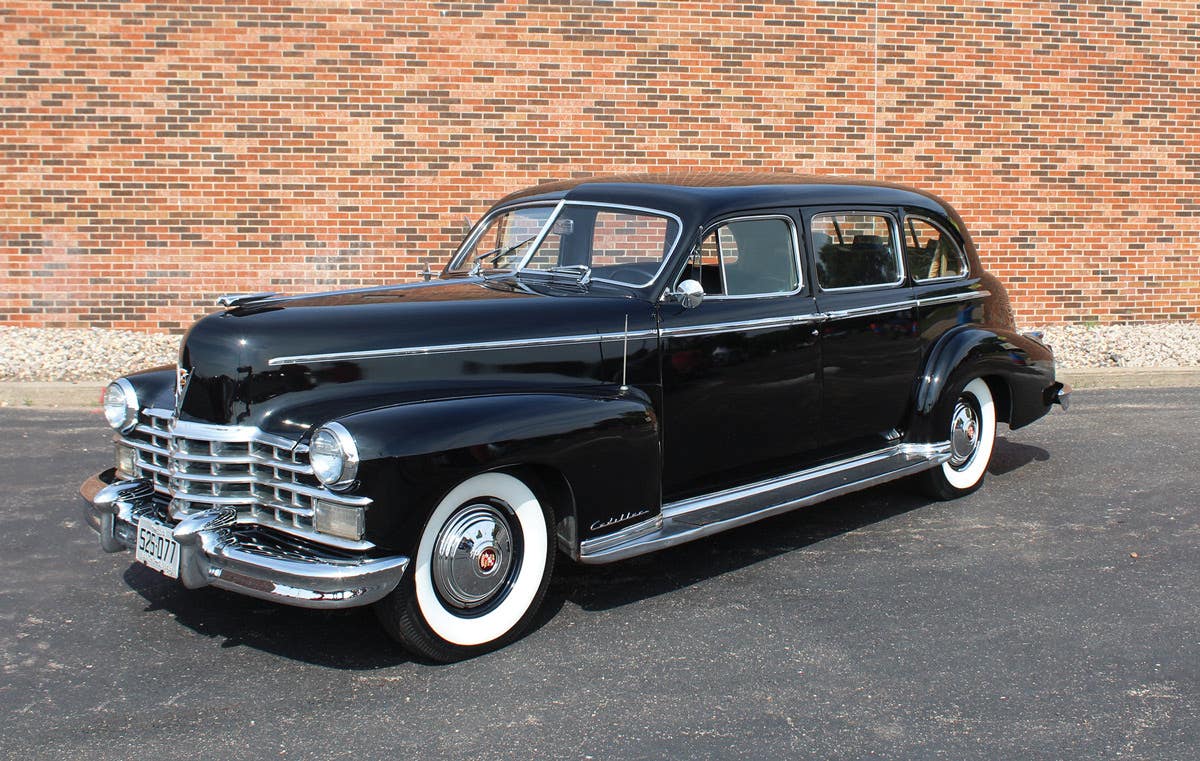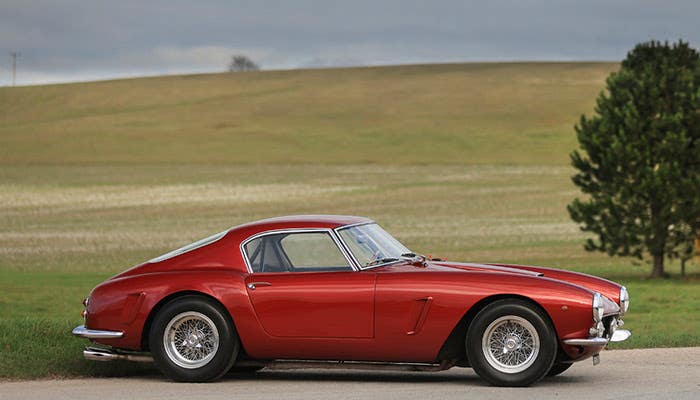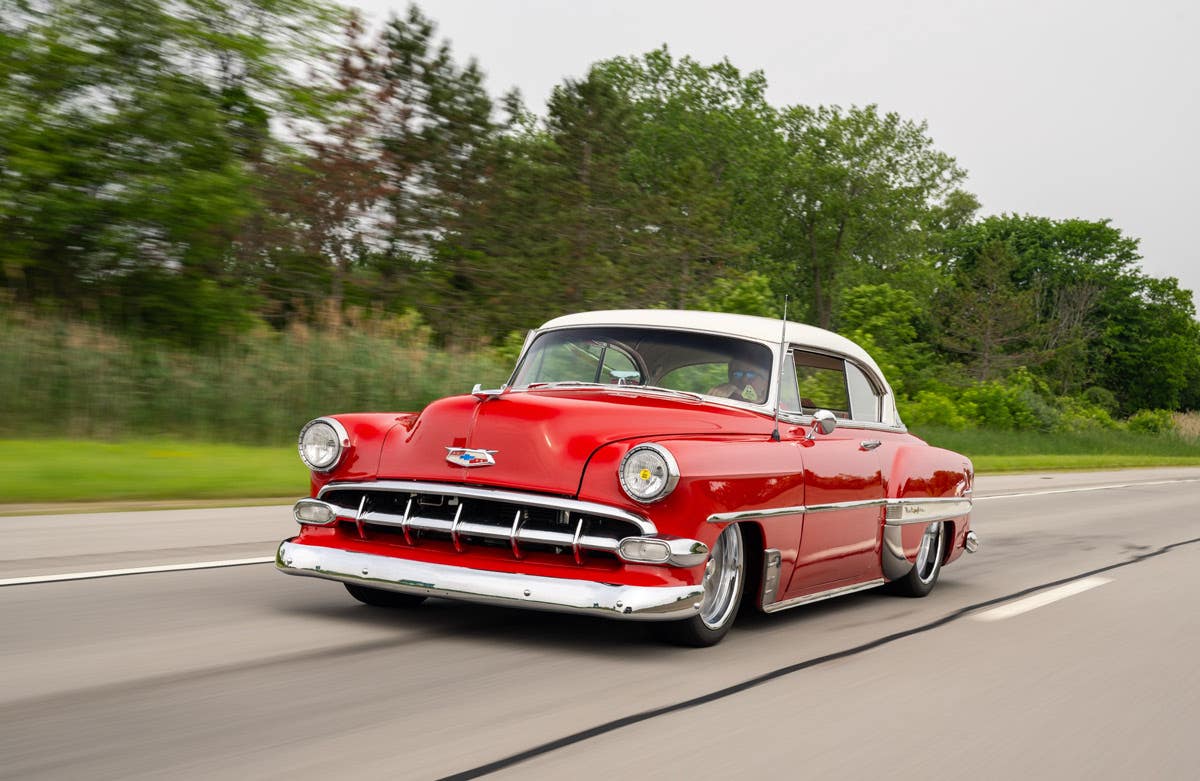CHANGE OIL FOR WINTER
Most of us have changed a car’s oil or watched while a garage or quick-lube shop did this basic job. Changing oil in an old car is much the same,…
Most of us have changed a car’s oil or watched while a garage or quick-lube shop did this basic job. Changing oil in an old car is much the same, but sometimes involves a unique twist or two.
Cars used in “city driving” require an oil change every 2.000-3,000 miles or 3-4 months, while those that are “country driven” can be serviced every 3,000-4,000 miles or six months. If your collector car sees more stop-and-go use, it needs more frequent service. Do it at least every 6 months to avoid driving with contaminated oil. If you have an original prewar or early postwar car and the owner’s manual recommends changes every 500-1,000 miles, follow it.
Determine your car’s oil capacity from your manuals. Buy the type of oil specified in your shop manual (or the modern equivalent). You’ll also need jacks or ramps, a drain-plug wrench (an adjustable may do), a drain pan, shop towels, oil dry, a funnel, work gloves and possibly hand cleaner. If the car has an oil filter, you’ll need a new one, plus an oil filter wrench and pliers.
Drive car at least 5-10 minutes to warm the oil. You will want to remove the plug and drain the oil while hot. Sometimes you can access the oil drain plug without lifting/jacking the car. Otherwise you’ll need to jack it up and place stand jacks under the frame to support the vehicle securely. If you have ramps or a lift, drive the car on them. Set hand brake. Chock the wheels so the car won’t roll.
Remove drain plug with your drain pan ready. If the car is high in the air, hold the drain pan right under the plug, then quickly lower it to the ground while arcing it out, under the flow of the draining oil. Once you learn to do this, you’ll get less splashing and spillage. If the car is only a foot or so off the ground, just put the pan right below the plug. It should take about 10 minutes for all oil to drain. During this time you can be checking other fluid levels. Also check the condition of the drain plug and any gasket it uses.
Most cars of 1968 or newer vintage use a spin-on oil filter, usually on the side or bottom of the engine. If the oil has been changed regularly, the filter may look cleaner than other engine parts. If the car has been sitting 30 years, the filter may be black with grime. In either case, use an oil filter wrench to unscrew it. Some are strap-on types and others grab on the fluted bottom of the oil filter. Once you have a grip, turn it counter clockwise. Place your drain pan under the filter. As you remove it, oil is going to pour out.
Before adding new oil, replace the drain plug by hand. Make sure it threads in straight. Do not cross thread or over-tighten. Then use your adjustable wrench to tighten, putting light pressure (about 20 foot-pounds) on it. As far as your spin-on oil filter, clean the treads on the engine fixture with a rag, put a new gasket on top of the oil filter, wet this gasket with a little engine oil and start threading the filter on by hand, turning in a clockwise direction. When it is fully hand tight, use an oil filter wrench to tighten it another ¼ turn.
Locate and remove the oil filler cap. It may cover a tube running to the side of the engine or it may be on top of the valve covers. Pour the correct amount of oil into the filler cap and replace the cap. In most cases, manuals will give you the oil pan capacity, then tell you to add one quart if the car has a filter.
Next, start the engine. Inspect for leaks around the oil filter or the drain plug. Check to make sure that the oil pressure monitor light stops glowing or that the oil pressure gauge indicates normal pressure within 5-10 seconds. After the engine runs for a minute or so and shows correct oil pressure (by monitor light or gauge), shut off the engine and give the oil half a minute to drain back into the pan. Now, use your dipstick to check the oil level and add oil as necessary.
As we said, old-car oil changes can be a bit different. Some old cars do not have oil filters or at least lack replaceable oil filters. Oil filters were an option for many ‘50s-and-earlier cars. When this extra was added, you got a canister type oil filter.
Some cars – like straight eight Pontiacs – had a non-replaceable, built-in mesh-type filter in the oil pan. Early-‘50s British sports cars came with horizontally-mounted canister filters, but many have been replaced with spin-on filter kits sold by British parts suppliers. The spin-on upgrade simplifies oil changes, but reduces originality.
Canister filters have a cartridge type filter that fits inside a metal container. On some, the container has a lid held on by a long bolt. Others run the bolt through the canister itself, drawing it tight against a fixture on the engine. Gaskets are provided to hold the oil in the canister where it seals against the lid or fixture. On some British cars, the gasket has to be fitted into a grove using a tool like a dental pick to do the trick installation. The parts must be in perfect shape to get a good seal. Rubber lines route the oil through the canister.
You can find old filters for canister-type oil filters at swap meets. If you do not, check www.rockauto.com. Some cars and trucks and all kinds of other machinery still use this style of filter. Chances are good that there’s a modern replacement that fits in the canister on your older vehicle.
After you have changed your oil, don’t forget to write down the date and mileage you did the oil change at. This will tell you when service is due again. Finally, take steps to dispose of the old oil (and oil filter if one is used) properly. Most recycling centers will offer provisions for this, as well as for getting rid of plastic oil containers.







